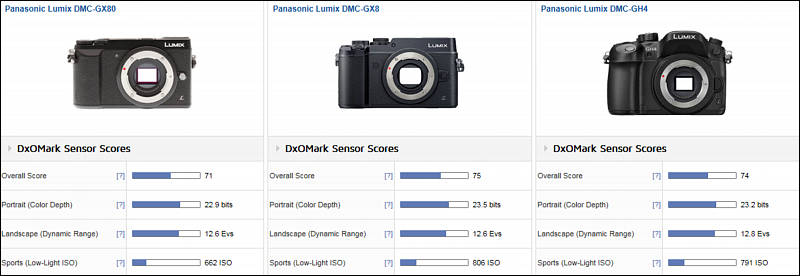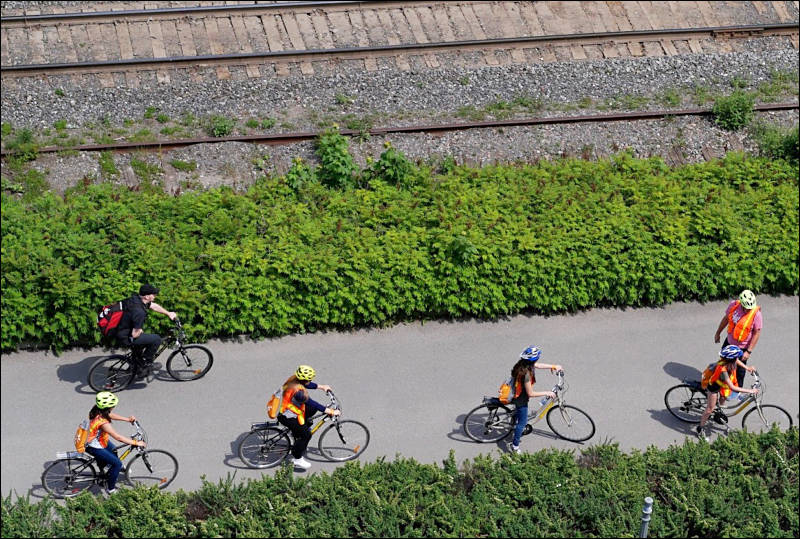
-
Very impressed with the noise compared to the GH4, even cropping the the frame to match the GH4, the noise is much controlled.

 compare.png.jpg3840 x 2160 - 1M
compare.png.jpg3840 x 2160 - 1M -
I wonder how much the GX85 better high iso is the result of better in-camera processing and how much sensor itself. Can the GH4 4k video be as good when post processed heavily?
Is GX85 RAW photos better in high iso than GH4 RAW photos?
Rumors say the GH5 trusts heavy processing and not so superior sensor.
-
I guess the sensor is kind of new, albeit being 16mp. When the new 20mp Sony m4/3 sensor was first listed (IMX269), another 16mp sensor was also listed too (IMX159) - I guess that it is the GX85 sensor.
Don't know if this sensor was previously used in another camera, but for sure it is not the E-M5 mark I sensor (IMX109); don't know if there was some intermediate sensor numbers between these two.
-
@Vesku We know two things are different in the GX85 relevant to IQ:
- There is no anti-aliasing filter, which should increase resolution for the same sensor and processing (if they are the same) and
- improved processing has reduced moire that would otherwise increase as a result of the lack of an anti-aliasing filter. The processor chip is I think new, along with algorithms.
-
I ran the GH4 clip (above) through NeatVideo and even still, I think the GX80 clip looks (a lot) better!
-

Panasonic sensor progress almost stopped.
http://www.dxomark.com/Reviews/Panasonic-Lumix-GX80-GX85-sensor-review-Diminutive-design

 img903.jpg800 x 276 - 39K
img903.jpg800 x 276 - 39K -
Bolt on Minolta 50mm. Camera says: Change aperture? I hit the 50mm button. Double tap on the image to get focus magnification. Then shoot handheld with IS on my lens from 1979. So, I know that Olympus pioneered this tech, and Panasonic is late to the game, but this is pretty good tech. It's worth remembering that the reason I tried m43 in the first place was to use my old lenses.
http://www.personal-view.com/talks/uploads/FileUpload/26/d38b7016df3437b42f75f1aca3ca00.jpg -
Yup. I found an old Olympus Zuiko 9-18mm zoom - unstabilized - that now can be employed (with adaptor) for handheld 4K video, using the unique perspective of an ultra wide-angle lens. This lens was the lightest and smallest ultrawide zoom 43 lens made by Olympus, and it is indeed small, not having to have OIS and not being very fast. The autofocus sounds like gears being mashed on an 18-wheeler, but it does the job to attain focus. I just never let it move during a shot.
-

 img963.jpg800 x 539 - 138K
img963.jpg800 x 539 - 138K -
An attempt at some street night videography with the Oly 75mm f/1.8:
-
That's some impressive unimpaired vision work there markr041 ;-)
Further to my post above: I've tried this before, the night street videography with the Oly 75mm f/1.8. I find the 150mm equiv focal length completely unusable hand held. Even with a monopod I get mostly unusable results. I find it possible to get reasonably steady static shots if handled with great care (kneeling, monopod steadied against chest or with the tilting eyepiece resting against eye socket (GX8)), however as soon as any movement's introduced it's incredibly challenging to keep things smooth. The monopod also requires a certain degree of deliberacy which invariably draws a lot of unwanted attention.
I tried with a Pilotfly H1+ once and did a little better, but still the panning was a bit of a mess. Most problematic was keeping a moving subject where I wanted it in the frame. The slight delay in the gimbal's response was too much for that focal length. And of course it also draws its fair share of attention from curious onlookers.
So I had no expectations of the GX80's IBIS doing any better. I even almost left the Oly 75mm at home, thinking I'd just take the 20mm f/1.7 and Oly 45mm f/1.8.
But I'm glad I did take the 75mm because I couldn't be any more thrilled with the results. I'm genuinely stupified at how capable it is. It's so much fun to handhold a 150mm equiv non-stabilised lens and come away with rock solid results and reasonably smooth pans.
-
@fahrenheit Is that the new L. monochrome setting in the GX85? I like the look in any case. IBIS is really good too.
-
@markr041 It was the L.Monochrome yeah. I quite like it as well. Some of the shots were a little washed out but I think that's something a lens hood would've helped with.
-
Playing with the old Olympus Zuiko 43 (not m43) 140-600mm macro zoom.
Why does one need a 600mm macro lens? Here's a hint (from the last part of the video):
http://i1268.photobucket.com/albums/jj572/markr042/Macro%2011_zpsxdkgqnxa.jpg
-
Thanks for the review-link. I was 80% sold on getting a GX85/GX80, but the video-part-review from the "art-of-photography" guy seemed so disappointing. So here we go again: sure this would be a step up from the LX100 I already own, but maybe it really does pay to wait for the GH5.
Howdy, Stranger!
It looks like you're new here. If you want to get involved, click one of these buttons!
Categories
- Topics List23,992
- Blog5,725
- General and News1,354
- Hacks and Patches1,153
- ↳ Top Settings33
- ↳ Beginners256
- ↳ Archives402
- ↳ Hacks News and Development56
- Cameras2,367
- ↳ Panasonic995
- ↳ Canon118
- ↳ Sony156
- ↳ Nikon96
- ↳ Pentax and Samsung70
- ↳ Olympus and Fujifilm101
- ↳ Compacts and Camcorders300
- ↳ Smartphones for video97
- ↳ Pro Video Cameras191
- ↳ BlackMagic and other raw cameras116
- Skill1,960
- ↳ Business and distribution66
- ↳ Preparation, scripts and legal38
- ↳ Art149
- ↳ Import, Convert, Exporting291
- ↳ Editors191
- ↳ Effects and stunts115
- ↳ Color grading197
- ↳ Sound and Music280
- ↳ Lighting96
- ↳ Software and storage tips266
- Gear5,420
- ↳ Filters, Adapters, Matte boxes344
- ↳ Lenses1,582
- ↳ Follow focus and gears93
- ↳ Sound499
- ↳ Lighting gear314
- ↳ Camera movement230
- ↳ Gimbals and copters302
- ↳ Rigs and related stuff273
- ↳ Power solutions83
- ↳ Monitors and viewfinders340
- ↳ Tripods and fluid heads139
- ↳ Storage286
- ↳ Computers and studio gear560
- ↳ VR and 3D248
- Showcase1,859
- Marketplace2,834
- Offtopic1,320











